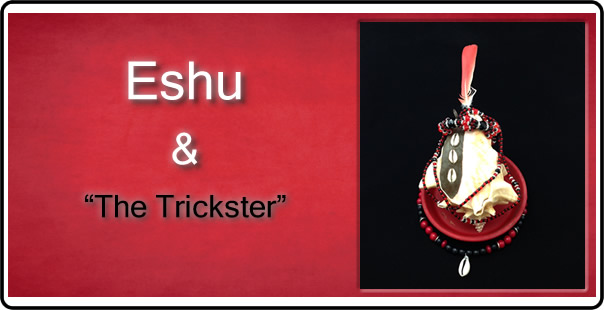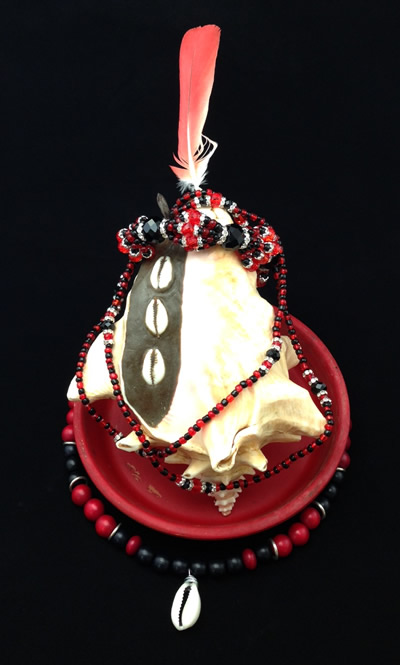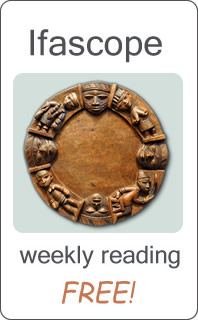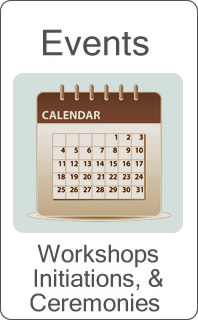Eshu - and the trickster
 Wednesday, October 26, 2016 at 4:44PM
Wednesday, October 26, 2016 at 4:44PM 
Eshu (Èṣù, Elegba, Elegbara, Echú), the divine messenger of “God – Olodumare” and the Orishas. Eshu can bridge the spiritual world with the tangible world. It is said that Eshu is everywhere at any given moment, and waits at the crossroads between heaven and earth between the two worlds. He is the divine messenger that clears a path for you, brings you success, and provide you with wisdom and Ashé.
For Ifa followers, having a personal Eshu is one of the fundamental steps in their spiritual journey. Typically done after you’ve had a “life path reading”. The reading would indicate which of the 256 Odu, or spiritual experience you’re having in this life. This is why you will often hear that Eshu has many paths (Spanish: “caminos”), the paths actually correlates to the 256 Odu. Your personal Eshu is created in a way that would resonate with you and your life path. Your personal Eshu becomes your guardian, protector, and spiritual messenger. There are many variations in how they look, so don’t fret if yours looks different from others you’ve seen, Eshu is Eshu, no matter the size of how it’s adorned.
 Eshu is often depicted with a single crimson parrot feather called “Ekodidé”. The feather stands prominently upright on the forehead, it represents “enlightenment, pure thought and intention, one that has no burdens weighting it down”. The bright crimson color is a beacon for attracting “Ashé”. You might have seen newly Ifa initiates wearing an “Ekodidé” for days for this same reason, new initiates are told not to cover their heads while Ashé is being drawn into their crown.
Eshu is often depicted with a single crimson parrot feather called “Ekodidé”. The feather stands prominently upright on the forehead, it represents “enlightenment, pure thought and intention, one that has no burdens weighting it down”. The bright crimson color is a beacon for attracting “Ashé”. You might have seen newly Ifa initiates wearing an “Ekodidé” for days for this same reason, new initiates are told not to cover their heads while Ashé is being drawn into their crown.
As legend has it, each of the Orishas went to see “God - Olodumare” to present the many gifts they had for humanity. These gifts were carried on their heads for Olodumare to bless. Eshu on the advice of Orunmila, would not carry a burden on his head and went with just a single crimson parrot feather on his head. Olodumare in turn bestowed Eshu the gift of Ashé to carry, and designated Eshu to be the divine messenger and communicator between heaven and earth; the divine mediator; the advocate for self-realization; one that has the power of thought and intention to create a new reality; the catalyst for change and movement; the one that could transcend boundaries and limitations of time and space. It has been said that “Eshu throws a stone today and hits a bird yesterday”.
Your personal Eshu may also have a small blade sticking out, representing “protection” as well as “creating a path for you” alike a machete cutting through the dense rain forest undergrowth to walk through. Other common adornments include cowrie shells to represent a mouth and eyes and alternating beads of red and black, it may also include a few white beads. It may be encased in a conch seashell, or a combination of clay, cement and resin, often made to resonate with your guardian Orisha as well (your guardian is also determined by divination).
For “Aleyos” (“the uninitiated”), the importance of having pure thoughts and good intentions are often given little importance. But once you embark on the Ifa path and get a personal Eshu, the importance of correct thinking becomes more apparent. With power comes responsibilities and one should note that Ashé is greatly diminished when our thoughts and actions lack good character. So it behooves you to always remember that “thoughts and intention have power, and Eshu can hear them”. If you want to manifest positive changes in your lives you must have pure thoughts and clear intentions. If your motivations are flawed in any way, it invites the trickster side of Eshu, one that has repercussions to help you adjust your character. It may manifest as simple mischief like losing your keys or being delayed, whatever it takes to get your attention. You see, Eshu as your guide is also your spiritual teacher. Some fear the trickster and they shouldn’t, there’s nothing to fear! Part of being on a spiritual journey is to learn from your mistakes, grow spiritually and develop your character.
Eshu play an important role in any Ifa work, in fact, your personal Eshu as your guide should always be by your side whenever you do a prayer, divination or Ebbos to the Orishas, because it is Eshu that will carry your thoughts, prayers and messages to heaven and come back with the Ashé. Eshu is always propitiated first before any other Ifa work to ensure success, then thanked last to complete your Ifa work. Remember that “everything begins and ends with Eshu”.
When you do seek guidance from Eshu, you should cusp your personal Eshu in your hands and bring it up to your forehead. Pray and imagine your thoughts being transferred to Eshu. The proximity of having Eshu that close to your forehead intensifies the connection.
Sprinkle water on Eshu and on the ground often to keep things cool and calm, say…
“Omi Tutu” (cool water to refresh)
“Ana Tutu” (my path is refreshed)
“Tutu Ilê” (refresh my home)
“Tutu Eshu” (refresh Eshu) - If your personal Eshu has a name, you can add it here.
It is said that Shango once asked Eshu why, being the divine messenger doesn’t Eshu speak straightforwardly and give people what they want. Eshu responded that his role as a teacher and guide is to open the door (“opportunity”), it’s up to the individual to walk through it, if they expects an answer or want something, I place it on their path to find, to do otherwise would rob them of the experience of self-realization, learning to think for themselves, the joy of discovering what they are capable of. I bring change to those who want it, and connection to the divine (“Ashé”) for those that seek it. Should people get everything they want? …No, not everything, it would be detrimental to their spiritual health to grant all their desires, they get rewarded for good character and get what they need so that they can continue on their life's journey.
Many people including myself when learning how to work with your personal Eshu, would eventually trip over the question of “free will” and won’t understand why some requests don’t work. For example, if you were to tell Eshu to get you this person that you’re attracted to, that would certainly be a dicey request because you’re asking to impose “your will” on another person. The more appropriate request would be to ask Eshu to create an opportunity for you two to meet if it benefits you both …If there’s a spark, may you get the chance to learn more about each other …If compatible, may it lead into a friendship, and perhaps an intimate relationship if the two so choose. So when working with your personal Eshu, it comes down to learning to see the big picture, using good character to find the win-win situation.
Here’s another example, if you feel oppressed by someone’s actions, you could ask Eshu to shield you and open a door for you to find a way out of the oppressive situation, or you could ask Eshu to draw this person’s attention away from you. The one thing you would not do is to invite the trickster side to cause mischief and havoc in retaliation to this person life.
 Eshu works in mysterious ways and will often take you out of your comfort zone, the reason may not be apparent at first, but if you trust him, it ultimately becomes clear. I received my personal Eshu (pictured at right) in 1983 at a time where I knew very little of the faith. I had only been given a life path reading as suggested by a dear friend, and was told that I needed “Elekes” (“beaded necklaces”) to protect my health and a personal Eshu to open up the life path that I was on. “What’s his name?” I asked… ”his name is Eshu Ayé and works closely with Olòkun, he will guide you now and take you to where you need to be, you need to trust him” I was told.
Eshu works in mysterious ways and will often take you out of your comfort zone, the reason may not be apparent at first, but if you trust him, it ultimately becomes clear. I received my personal Eshu (pictured at right) in 1983 at a time where I knew very little of the faith. I had only been given a life path reading as suggested by a dear friend, and was told that I needed “Elekes” (“beaded necklaces”) to protect my health and a personal Eshu to open up the life path that I was on. “What’s his name?” I asked… ”his name is Eshu Ayé and works closely with Olòkun, he will guide you now and take you to where you need to be, you need to trust him” I was told.
Very carefully I took him home wondering what I had gotten myself into. I placed Eshu on a corner of my room and gave him offerings as I was instructed and prayed for a better future. Within a week, I found myself out of work, the job I very much needed but made me miserable was gone. At the unemployment office I was advised that if I went back to school and got any training that would lead to job that I could still collect unemployment benefits so long as I didn’t miss a day of class, and would need to show proof of my attendance or would not get pay for the week. I only had enough money for the school application but everything fell into place, I was able to get assistance and a student loan, and was in a classroom shortly after. This is how I got started in my career in Information Technology. It all happened so fast with many changes in my life coming afterwards, all for the better. I knew Eshu was behind it all, even though I didn’t understand how at the time, I was happy that I had taken this leap of faith.
As a general rule, your personal Eshu should ONLY be handled by you and/or a priest (during a ritual sacrifice). Of course, sometimes the unexpected happens and you just need to roll with it. Years ago, I used to take my Eshu to work with me, I had my own office at the time so I would discretely put him under my desk, out of sight. One day, a co-worker came to see me needing some technical assistance, and went around my desk to show me something on my computer. In a blink of eye, he quietly reached under my desk and picked up my Eshu. “Oh, what’s this? ...is this a sea shell?” he was blushing now “…why is it so sticky?” my Eshu was covered in honey, so yes, he was quite sticky that particular day. My embarrassed co-worker fearing he had violated some taboo, said to me “can you take it off my hands now please”. I calmly smiled and explained what it was and told him I was a Babalawo. As it turned out, his life was in crisis and was in badly need of a reading. So I gave him a reading later in the day and the spiritual guidance he needed. What apparently happened was that he got closed enough to Eshu that Eshu heard his thoughts and brought it to my attention. Eshu works in mysterious ways.
After that experience, I realized that I should get a travel-sized pocket Eshu. They would stay together at home, but when I would go away, I could take my travel Eshu with me. There was also the concern that my regular size Eshu could be confiscated at the airport.
The Trickster:
The renowned psychiatrist and psychotherapist Carl Jung (1875 – 1961) talked about “the trickster” archetype found across many cultures and religions. While each “trickster” character is unique in their own way for each culture he said, there is a certain commonality across different cultures that suggest the threads of consciousness that connects all human beings, what he called the collective unconsciousness. A reminder that all human beings regardless of cultures and beliefs are bound together in some way. Among the many cultures with a trickster archetype, the Yoruba have Eshu.
Eshu is loved and venerated, but often feared because of the trickster side. The trickster is the unruly, mischievous, provocative, chaotic and disruptive energy that disperses any form of order and organization, breaks with taboos and exposes human’s follies, but at the same time, inspiring some kind of change to occur. So the trickster side of Eshu should not be rebuked out of fear. It is ultimately necessary to have a counter-balance to “structure” in order to create something new. Where would we be if we couldn’t break barriers, tear down walls, revolt against oppression, destroy that which no longer serves a purpose and impede our success?
Our first reaction may be to vehemently resist change, but change is ultimately necessary to grow, especially when we become too rigid or get stuck in a particular way of thinking. The following “Pataki” illustrates this.
Pataki:
In one “Pataki” (story), two farmers happily lived next to each other, being close friends they had agreed they would never argue with each other. One day Eshu wore a big hat that was white on the right side and black on the left side. He walked pass them, right between the farmers to get their attention, the farmers noticed the hat and commented on it, and soon found themselves arguing about the color, “it is black!”, “no, it is white!” Eshu laughing in amusement returned sometime later to show them that they were both wrong! The hat was inside out and the hat was actually red. Eshu was teaching them a lesson because they were too complacent and rigid.
The children of Eshu:
Children of Eshu are exuberant and happy-go-lucky, when well-adjusted, they go about life as if they didn’t have care in the world. They can be spontaneous and can quickly change direction when something new draws their attention. They are at their best when they can do things their own way. Intuition and intellect is high and should cultivate it. They have a good sense of humor and can make a lot of friends.
The children of Eshu have an entrepreneur streak in them that would serve them well if they choose to work for themselves. Being independent is important to them as they don’t like too much structure. They gravitate to careers in communications, teaching, research, and exploration.
Celebration Day:
While any day of the week is fine to work with Eshu, at the Ifa Foundation we work with Eshu on Saturdays. It is recommended that you bond with Eshu on a regular basis by making small offerings and prayers.
June 13th in an Eshu celebration day.
Caring for your Eshu
Ideally, Eshu should be near your front door, close to floor in a corner. So that it not only protects your home, but so that you make a visual/mental connection whenever you pass by him. It can be placed directly on the floor or if you like, or some type of terra cotta saucer.
Only handle Eshu when you are in a good frame of mind, not when you’re angry, upset, intoxicated, or uncleaned in any way.
Some people like to give Eshu toys and other objects. My suggestion if you do, is to keep it small, about the size of 3 Lego blocks or a matchbox car, glass marbles are a good choice assuming you don’t have little kids that may put them in their mouths. My recommendation is to give him a “charm bracelet” where you could add charms that represent important aspects of your life. This will strengthen your connection to Eshu and to what is happening in your life.
If you give Eshu “coins”, clean the coins first with salt water and sage smoke to remove other people’s energies. It’s better to use new uncirculated coins, after you clean them, carry the coins in your pocket for 3 days to infuse your energy before offering it to Eshu (always in multiples of 3).
Colors: Red and Black
Red represents “energy” - the zest for life; our drive to survive and thrive.
Black represents “grounding” – being here now; protection; our connection with the earth.
Number: 3 - I believe that the number 3 is a reference to time as in "Past", "Present", & "Future".
Multiples of 3, and 21.
Offerings to Eshu:
Keys, colorful glass marbles, toy cars, coins, whistles, ball, toy soldiers, colorful Lego blocks, feathers, animal figurines.
Liquor: rum; anisette; whiskey; vodka.
Oil: olive oil; palm oil; coconut oil.
Cigars
Black coffee
Sweets: honey; wrapped candies; popcorn; sugar cookies; caramel; gingerbread cookies; coconut cookies.
Fruits: coconuts; plums; bananas; apples; white grapes
Spices: peppercorn.
Eshu Names:
Your personal Eshu may have been given a name when created, but if he doesn’t, you could certainly give him a name if you like since it’s your personal Eshu. You would choose a name that resonates with you and your life path, then through divination you would ascertain that the name is accepted.
Partial list of Eshu names:
Eshu Aláròyé (Laroye) - companion of Oshún, at home along the river’s edge, likes the sound of running water and children playing.
Eshu Ayé – companion to Olòkun, at home along the ocean surf where the waves break.
Eshu Echenike – companion to Osain.
Eshu Alaguana – companion to Ogun.
Eshu Afra – companion to Babalú Ayé.
Eshu Olona – companion to travelers.
Eshu Ayeru – companion to Babalawos.
Love and Blessings! Javier Lujan {Babalawo Ifajuitan}





Reader Comments